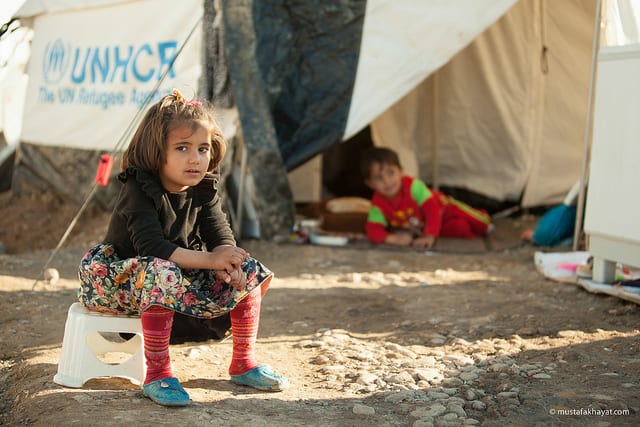As we offered a toast in the last minutes of 2014, a Jesuit friend said soberly, “To the end of 2014. May it never be repeated.” By most accounts, 2014 was a pretty dreary year for humanity. Planes fell from the sky, lost in stormy seas and no-man’s-land war zones. Ferries burned and sank, stealing young lives. Syria has been gutted and torn to rubble for…what exactly is the reason again? Palestine and Israel remain hostile neighbors, locked in a fight without ground rules. Ebola still ravages peoples seemingly far, far away; its haunting reach was hard to grasp until it surfaced in American hospitals, apartment complexes — maybe even bowling alleys? American cities simmer and pop as racial tensions boil over into demonstrations. People of good will plead for an end to mutual fear and violence, with few ideas of how to begin. And now we begin 2015 with a shooting rampage in Paris: of people who write for a satirical newspaper. Really?
“To the end of 2014. May it never be repeated?”
If you have 8 minutes, have a look at the 2014 New York Times “Year in Pictures.” You will revisit one gut-punch to humanity after another in vivid, often beautiful photos. Dana Jennings of the Times asks, “How Close Are You Willing to Get?” How close to Ebola-plagued orphans? How close to veiled mothers, clutching coffins of children lost half a world away? How close to detained immigrants, in Lampedusa or Loredo?
Often enough my answer, honestly, is “not too close, please.” The world beyond the gate can be frightful and grim. The 100 photos of 2014 — with a few exceptions — are hard to look at, and yet curiously mesmerizing. They stir pity, anger, and dis-ease into a muddled froth of incomprehension: “how did I manage to dodge all this?” “Can’t someone do something about this?” And the sinking suspicion that there is too much amiss to do anything about it sends me searching for something…less unsavory. Fortunately, the NYT is happy to oblige with Mark Bittman’s recipe for cracker-crust pizza with fresh arugula. And there’s always another article about how Facebook is making people sad. Or I can stream one of my go-to dramas about violent criminal minds, domestic terrorism, or ad execs with existential hangovers.
I wonder as I wander about the internet, a cyber-flaneur looking for opportunities to dip in here and there. I get close — but not too close — to the world’s grittiness. I suspect things like 2014’s “Year in Pictures” is appealing because (like most HBO shows) they depict what most of us — we Readers of Thoughtful Articles on iPads — will never encounter first-hand. Do we gaze into the mortal pit, only because we know the guardrails are there? The violence and disasters seen in 2014 will likely not slip away peaceably into the night. The shootings in Paris earlier this week showed us that already, not a week in. But cursing the dark — either through paralysis of despair, or numbing escape into the sanitized world of streaming content — will do nothing to make 2015 a better year. So the question becomes, What is a thoughtful person to do in the face of the world’s ills?
* * *
Perhaps for starters, we can take nothing for granted, even the peace and security that we enjoy. This is not a plea for paranoia, but awareness of the fragility of our stability. We can look at these pictures, and then swipe them offscreen with a fingertip, as if to say, I have seen enough of this unpleasantness, thank you. Now I want to — I need to — look away before it unsettles me too much. If these pictures reveal anything to me, it is that the peace that most of us enjoy is a rare privilege in the world.
At its best, all this naval-gazing leads serious minds in stable places to ask: where’s a good God to be found here? For all the omnipotence and benevolence ascribed to him, the Big Kahuna remains maddeningly silent in the face of a violent world, like a wearied parent who throws her hands up and surrenders: “Ya know what? Just do whatever ya want.” My non-believer friends twirl their coffeespoons and ask with polite insistence, If God is real and all-powerful, why doesn’t he intervene? Religious people are killing one another in the name of the divine. Would a benevolent God demand this? Can an omnipotent God worthy of worship permit this?
I don’t have a suitable answer to this, other than some vaguely unsatisfying turn-of-phrase like, “God doesn’t permit it — we do.” And yet, we do permit it. We don’t want to get close — at least not too close — because most of what we see in pictures is comfortingly remote. Distant geographically, often enough. (See the sun and sand? That means far away. See their homes and clothes? Not like here.) But the problems are also cognitively remote: they are hard to resolve, even among experts. We do not have clear solutions to complex phenomena in our own cities like racial tensions, generational poverty, and childhood hunger; how are we to deal with revolutions half a world away? I can’t solve them, so I turn away to focus on what I can control. The shift of attention is practical and understandable; we can’t do everything. But nor should we be content to permit everything, simply because it appears to be distant.
As I read stories of the attacks in Paris, I was moved to take a second look at the 2014 “Year in Pictures.” If you look carefully through the pictures, there are people who close the distance, who refuse to let violence and death have the last word. Ebola doctors, rescue workers, gravediggers, soldiers, and religious leaders chose to come close, often at great personal risk. Which leads me to think that maybe God doesn’t remain silently detached from the world after all. Einstein quipped that God is not malicious — but he is subtle. When we experience the gut-punch of photo essays like the New York Times‘s review of 2014, something strikes a deep nerve of truth: all is not right in the world, and it demands my attention, compassion, and action. We are not likely to make the world perfect — alas, events like 2014’s will undoubtedly repeat — but that does not excuse tepidity, cynicism, or despair. A fire does not discourage firemen; but it does demand their response.
The comfortable voyeur’s dis-ease at seeing unsavory photos of the world may well be a divine ‘twitch on the thread’ that summons us who are comfortable to…come a little closer. To work in the world, messy as it is. To pray for peace, and act like we mean the prayer. To offer the lonely and downtrodden a shoulder, a phone call, a hug. To spend less time lamenting complex ills, and more time practicing simple, concrete good deeds to those who won’t – or can’t – repay the favor. Perhaps that twinge of dis-ease is the call to speculate less about God in an armchair, and talk to him directly; maybe even in the rarified airs of an empty old church, where cramped and creaky pews feel too old-worldish to us modern types. A call to set down our iPads. To peer out the window, past the gate, to a world that quietly shouts, “please, come a little closer.”


